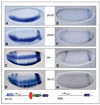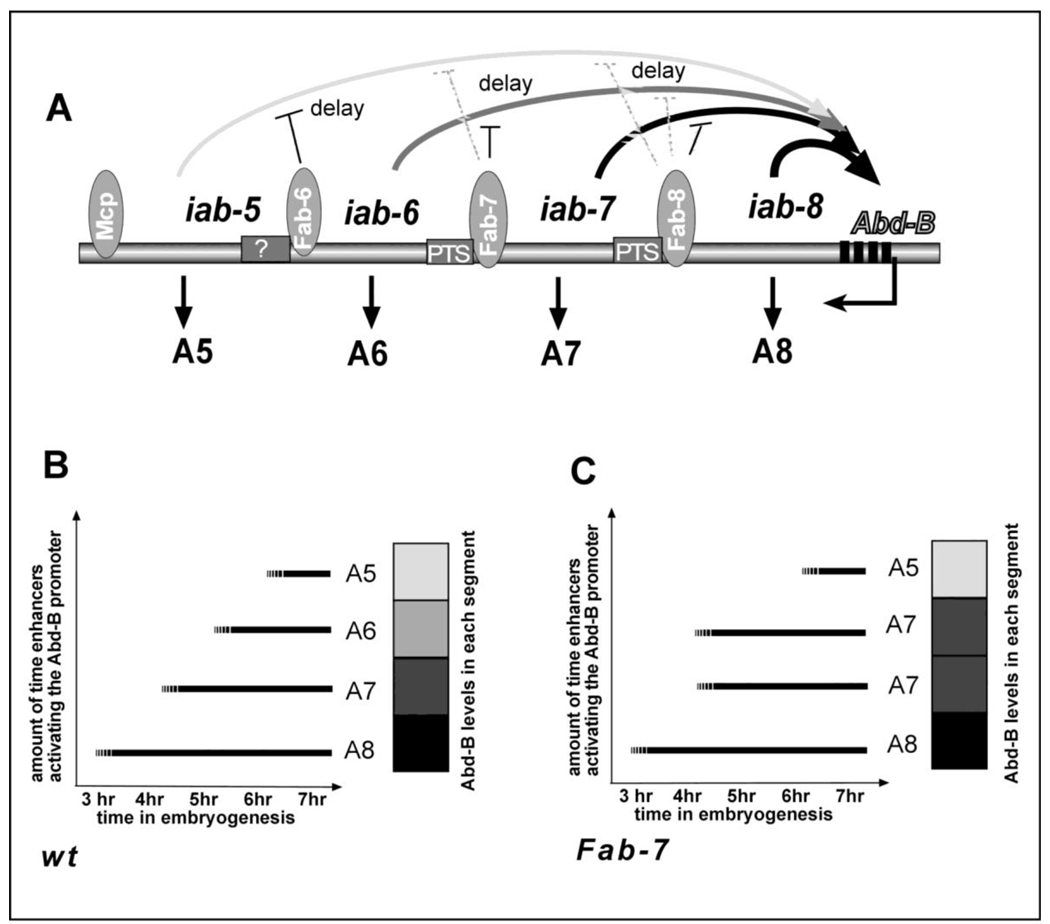Chromatin insulator and the promoter targeting sequence modulate the timing of long-range enhancer-promoter interactions in the Drosophila embryo
- PMID: 20045684
- PMCID: PMC2866086
- DOI: 10.1016/j.ydbio.2009.12.029
Chromatin insulator and the promoter targeting sequence modulate the timing of long-range enhancer-promoter interactions in the Drosophila embryo
Abstract
The homeotic genes are essential to the patterning of the anterior-posterior axis along the developing Drosophila embryo. The expression timing and levels of these genes are crucial for the correct specification of segmental identity. The Abdominal-B (Abd-B) gene is first detected in the most posterior abdominal segments at high levels and gradually appears in progressively anterior abdominal segments in lower amounts. Regulatory mutations affecting this expression pattern produce homeotic transformations in the abdomen. The promoter targeting sequences (PTS) from Abd-B locus overcome the enhancer blocking effect of insulators and facilitate long-range enhancer-promoter interactions in transgenic flies (1, 2). In this study, we found that transgene activation by the IAB5 enhancer can be delayed by inserting a 9.5 kb 3' Abd-B regulatory region containing the Frontabdominal-8 (Fab-8) insulator and the PTS element. We found that the delay is caused by the PTS and an insulator, and it is not specific to the enhancer or the promoter tested. Based on these findings, we hypothesize that the delay of remote enhancers is responsible for the Abd-B expression pattern, which is at least in part due to the regulatory activities of the PTS elements and chromatin boundaries.
Copyright 2010 Elsevier Inc. All rights reserved.
Figures







References
-
- Zhou J, Levine M. A novel cis-regulatory element, the PTS, mediates an anti-insulator activity in the Drosophila embryo. Cell. 1999;99(6):567–575. - PubMed
-
- Lin Q, Wu D, Zhou J. The promoter targeting sequence facilitates and restricts a distant enhancer to a single promoter in the Drosophila embryo. Development. 2003;130(3):519–526. - PubMed
-
- Karch F, et al. The abdominal region of the bithorax complex. Cell. 1985;43(1):81–96. - PubMed
-
- Duncan I. The bithorax complex. Annu Rev Genet. 1987;21:285–319. - PubMed
Publication types
MeSH terms
Substances
Grants and funding
LinkOut - more resources
Full Text Sources
Molecular Biology Databases

